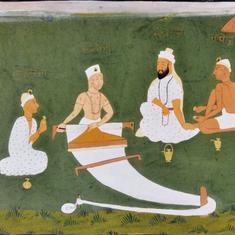But how much do we really know about transgendered people? Are hijras and kinnars the same as eunuchs? How are kothis different from hijras? Which terms are acceptable and which are derogatory? Here is a brief guide to the terminology associated with transgendered communities in India, compiled from the definitions given in the April 15 judgement and by transgender activists.
Eunuch: A person who is born male but is emasculated or castrated. If castration takes place at an early age, as is often the case, it can have major hormonal consequences. A eunuch can also refer to an intersex person whose genitals are ambiguously male-like at birth.
Hijra: The Persian word is loosely translated as eunuch in English, but unlike eunuchs, not all hijras are necessarily castrated. According to the judgement, hijras are biological males who reject their masculine identity and identify either as women, or “not-men”, or “in-between man and woman” or “neither man nor woman”.
In India, hijras tend to identify as a community with its own initiation rituals and professions (like begging, dancing at weddings or blessing babies). They even have their own secret code language, known as Hijra Farsi, which is derived from Persian and Hindustani.
Kinnar: The term for hijras in north India. In other parts of India, such as Maharashtra, the term kinnar is being used more recently by the better-educated hijras to refer to themselves.
Aravani: The term for hijras in Tamil Nadu. They identify themselves as women trapped in male bodies, although many aravanis would prefer to be called ‘Thirunangi’.
Kothi: The judgement describes kothis as a heterogeneous group, because it refers to biological males who show varying degrees of being effeminate. They prefer to take the feminine role in same-sex relationships, though many kothis are bisexual. Some hijras identify as kothi as well, while not all kothis identify as hijra or even transgender. They do not live in separate communities.
Shiv-shakthis: Typically referring to a community of transgenders in Andhra Pradesh, Shiv-shakthis are males who are considered “possessed by” or “married to” the gods, particularly Lord Shiva. They have a feminine gender expression and cross-dress as women during religious rituals and festivals. They work typically as astrologers or spiritual healers. The community is guarded by gurus who induct disciples and train them for the work.
Jogti hijras: In Maharashtra and Karnataka, jogtas and jogtis refer to male and female servants who dedicate (or are made to dedicate) their lives to gods in different temples. Jogti hijras refer to male-to-female transgenders who devote themselves to the service of a particular god.










